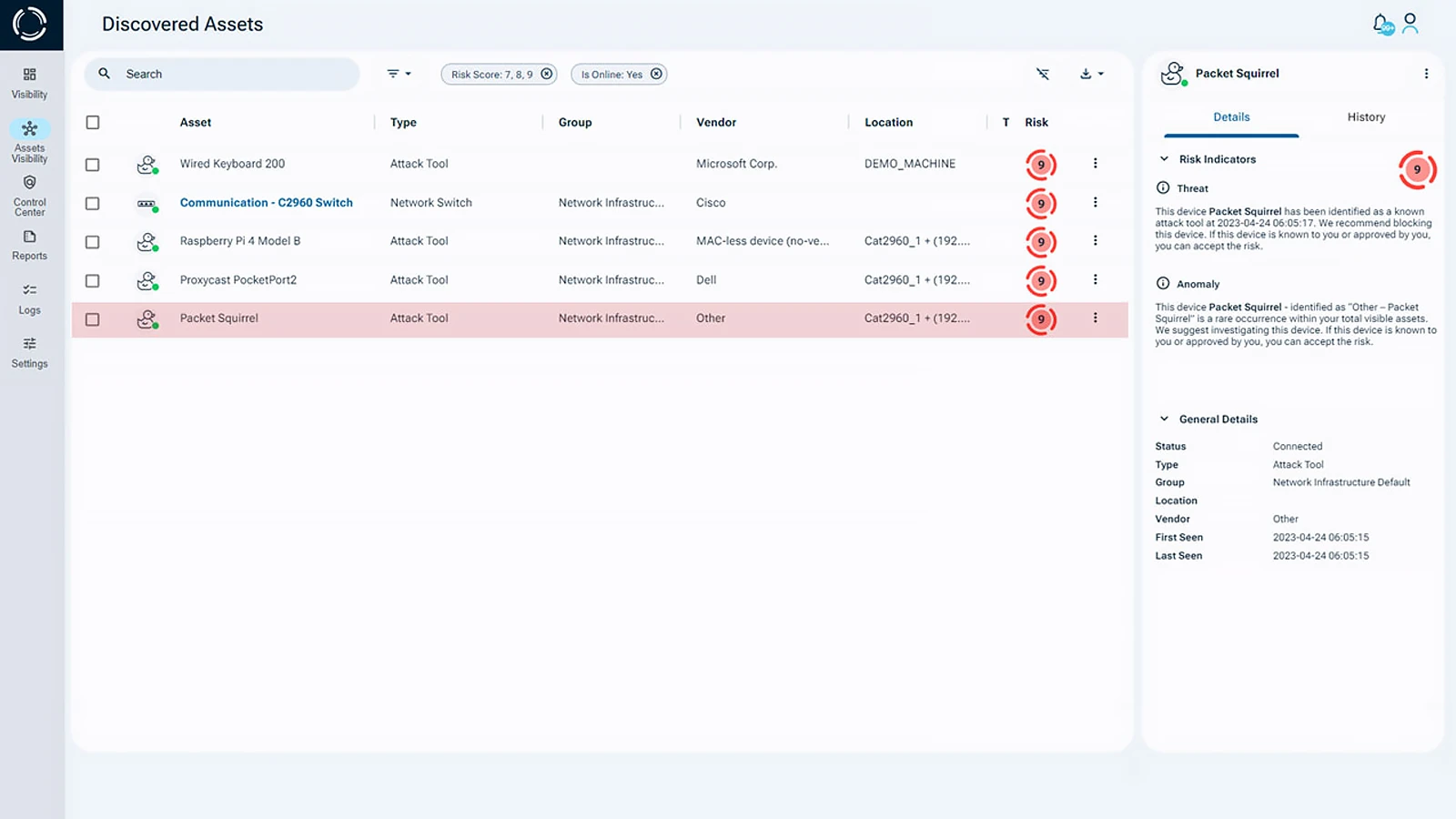Hardware-Based Zero Trust Security Platform
In today’s complex cybersecurity landscape, implementing a Zero Trust Security Platform is essential for maintaining visibility, control, and protection across all network-connected assets.
Zero Trust Security is more than just a framework, it’s a strategic approach that assumes no device, user, or connection should ever be trusted by default. Instead, every entity is continuously verified, monitored, and validated before access is granted. This model replaces outdated perimeter-based defenses with a continuous trust evaluation process that aligns with the “never trust, always verify” principle.
For organizations managing diverse IT, OT, and IoT environments, a Zero Trust Security Platform ensures that all Zero Trust Devices, from endpoints to embedded systems, are properly authenticated and monitored, minimizing exposure to insider threats, rogue devices, and sophisticated cyberattacks.
What Is Zero Trust Security?
Zero Trust Security represents a modern cybersecurity paradigm that eliminates implicit trust within digital ecosystems. Instead of assuming safety within a defined boundary, the Zero Trust model continuously evaluates every user and device interaction.
The goal is to enforce strict access control and maintain constant awareness of all devices and data flows. By doing so, organizations can better manage cyber-physical risks and protect sensitive operations from internal and external threats.
Why Zero Trust Device Security Matters
Zero Trust Devices are the backbone of Zero Trust implementation. Every connected device, laptop, server, IoT sensor, or USB peripheral, must be verified, actively managed, and monitored at all times. This ensures that only trusted hardware participates in your network operations.
Critical infrastructure sectors such as energy, transportation, communications, and finance rely on Zero Trust Device Management to safeguard operations. Rising threats include:
- Insider threats, whether intentional or accidental
- Sophisticated global cyberattacks
- The emergence of highly destructive threat vectors
Implementing Zero Trust Device Management helps organizations detect unauthorized connections and maintain a complete inventory of trusted devices. This comprehensive visibility is essential for preventing advanced threats and maintaining compliance with security regulations.
Supply Chain Risks and Hardware-Level Security
Global supply chains introduce hidden risks through compromised or counterfeit hardware. The U.S. Government Accountability Office (GAO) and section 889(b) directives highlight the need for comprehensive oversight and mitigation of hardware-based supply chain threats.
Achieving this requires complete visibility into all connected assets, including devices that interact at the physical layer. Attackers exploit blind spots using malicious USBs, Human Interface Devices (HIDs), and physical network implants, making hardware-based Zero Trust Security essential.
Hardware-Based Zero Trust Security
Implementing Zero Trust at the hardware layer strengthens your organization’s overall defense posture. By ensuring that only authorized devices can operate within the environment, you can reduce supply chain risk, prevent hardware tampering, and maintain continuous device trust.
Sepio’s Zero Trust Security Platform brings this vision to life through continuous hardware fingerprinting and behavior monitoring—ensuring that only legitimate, authorized devices interact with your environment.

Challenges in Implementing Zero Trust Security
Total visibility is required to account for all of the agencies’ IT/OT/IoT assets – Knowing what you have, verifying what you own and only then trusting it. Spoofed devices, physical layer implants, “hiding” in the physical layer, or impersonating as legitimate devices while sharing the same logical identification are hard to identify using existing technology. Rogue wireless access points, which can be exploited for attacks both in enterprise environments and remote work setups, further highlight the importance of securing Zero Trust Devices at the hardware level.
Sepio’s Approach to Zero Trust Devices
Sepio’s Zero Trust Security Platform uses a unique algorithm based on physical-layer fingerprinting, augmented by Machine Learning techniques. This approach allows Sepio to discover and report all devices, including rogue and unauthorized Zero Trust Devices, enforce usage policies, deliver Zero Trust Risk Insights, and provide device scoring, all within the framework of Zero Trust Security.

By enabling organizations to gain full visibility into their Zero Trust Devices, a stronger cybersecurity posture and true Zero Trust Hardware Access (ZTHA) methodology can be achieved, with key highlights such as:
- Asset visibility
- Policy management
- Device risk scoring
- Risk insights & actionable playbook
- Embedded Device Threat intelligence database
- Extensive device hunting, IR & Forensic features
- Fully integrated with popular orchestration & automation products
Sepio’s Zero Trust Security Platform
Complete Visibility of All Devices
With all devices and anomalies detected, enterprises benefit from an improved overall cybersecurity posture. Gaining full visibility into all Zero Trust Devices, from endpoint peripherals to connected IT/OT/IoT devices, Sepio leverages unique physical-layer visibility and hardware fingerprinting technology to enhance security in line with Zero Trust Security principles.
Full Control Through Predefined Policies
Enterprise-wide policies ensure compliance with regulations and industry best practices. With predefined templates, no baselining requirements, and no need for a clean environment start, Sepio provides fast and easy implementation for securing Zero Trust Devices.
Rogue Device Mitigation (RDM)
Threat mitigation upon the discovery of rogue or threatening devices is a critical aspect of Zero Trust Security. Integrations with existing security platforms such as NACs and SOARs for mitigation and remediation enhancements.
Gain Control Over Your Zero Trust Devices and Mitigate Risks
Take control of your hardware security with Sepio’s patented technology. Gain full visibility, enforce Zero Trust Security Platform policies, and prevent rogue device threats before they compromise your organization.
Schedule a Demo today and see how Sepio can safeguard your IT network.
Read the Zero Trust Hardware Access Solution Brief (pdf)





